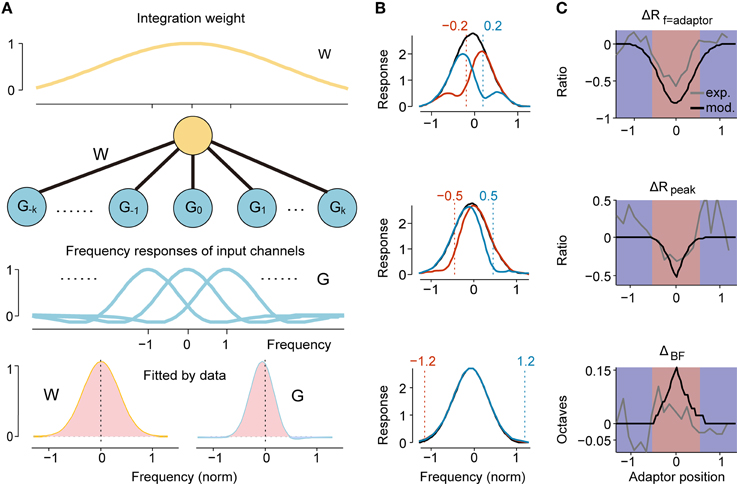Novel Sound Processing

Natural acoustic environments include complicated scenarios which are constantly changing. The occurrence of a novel sound deviating from the background often signals changes in the environment, which is important for behaviors or even survival of animals and humans. The neural substrate of this novelty detection has been studied through stimulus-specific adaptation (SSA) at single neuron level in recent years. In this project, we systematically examined the SSA in rat Inferior Colliculus (IC). We used a lower stimulus repetition rate to investigate the properties of SSA in various frequency conditions and compared them with previous findings. We described and analyzed the global and local components of response dynamics during the presentation of the sound sequence. Our finding confirmed the existence of SSA in rat IC and further demonstrated global/local components and temporal dynamics of SSA at midbrain level. We also built a two-layer feedforward neural network model to mimic and predict the neuronal response to novel sounds with different frequencies.
Techniques
Research highlights
Firstly, we investigated the properties of SSA in rat IC using oddball paradigm. We found that SSA existed even at a lower repetition rate (1 Hz), besides at relatively higher rates (>2 Hz) shown in previous studies. We also analyzed the temporal dynamics of adaptation to the entire stimulus sequence. Global and local components were found in the response process. These components include a long-term adaptation during the entire oddball sequence, a short-term increase of responses to common stimuli after rare ones and the effects of stimulus history on current response. By fitting a linear model regarding stimulus local history and global probability, we found both of them affect IC neuronal responses. Our study further supports the existence of SSA in IC and provides detailed properties of the neural processing of novelty detection at midbrain level.
Next, we studied how frequency-receptive fields of neurons in rat inferior colliculus (IC) changed when exposed to a biased tone sequence. Pure tone with one specific frequency (adaptor) was presented markedly more often than others. The adapted tuning was compared with the original tuning measured with an unbiased sequence. We found inhomogeneous changes in frequency tuning in IC, exhibiting a center-surround pattern with respect to the neuron’s best frequency. Central adaptors elicited strong suppressive and repulsive changes while flank adaptors induced facilitative and attractive changes. Moreover, we proposed a two-layer model of the underlying network, which not only reproduced the adaptive changes in the receptive fields but also predicted novelty responses to oddball sequences. These results suggest that frequency-specific adaptation in auditory midbrain can be accounted for by an adapted frequency channel and its lateral spreading of adaptation, which shed light on the organization of the underlying circuitry.

SSA Paradigm

SSA Neural Network Model
Related Publications and Presentations